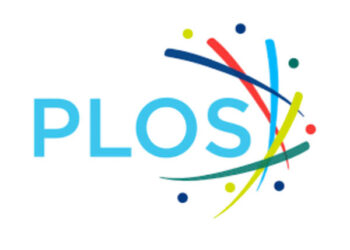
The word “strategy” has its origins in warfare: the Greek word, “stratēgia” means generalship, the marshaling of all available forces to achieve a military goal. Strategy, then, is all about competition, also an enduring concept.
A more useful perspective on strategy lies in evolutionary biology. Competitors abound, and it is the fittest that survive and thrive. In business, the drivers are assumed to be the same. With limited resources and markets, it is the business with a unique advantage that wins, crowding out weaker competitors. Business and biology differ, though, in one important respect: when developing a business strategy, the rate of development of competitive advantage can be influenced by strategic thinking – not so in biology. In business then, there is a deliberate development of strategy to secure competitive advantage in the marketplace.
Strategy of course can mean many things to many people. The most important component of thinking strategically is defining your goals clearly. Without goals — set in the context of mission and culture, with articulated themes for success — strategy is worthless. As a society, what then are the goals for a winning strategy? Survival alone? Should we be chasing market share? Or perhaps we should be expanding our definition of the market in which we operate. Is it financial growth? Or is it not growth for growth’s sake, but rather growth to ensure sustainability?
One thing that is clearly missing from the militaristic origins of strategy is the notion of collaboration. For research societies faced with increasing competition from companies driven by maximizing shareholder value, there is much to be gained by collaboration – thinking through how we best serve our communities as a collective, rather than retreating into competitive isolation.
And then there is the matter of scale. Most non-profit societies are relatively small in comparison to their corporate competitors. Fellow chef Kent Anderson suggests, in his unnerving post Scale Rewards, Scale Punishes – Is the future of Scholarly publishing already determined, that scale matters, “The big will get bigger. The small will be swallowed up or vanish altogether. No current trend or innovation will change this.”
So, strategy is a valuable thing. How do we go about developing strategy? Many societies are excellent at operations. Maintaining the day to day business of publishing is of course vitally important, and yet it can be difficult to come to grips with strategy development. Societies are operated by staff and governed by academics and it is not a natural state for a society to be entrepreneurial – yet it is necessary.
The starting point has to be recognition from the society governance that strategy development is indeed necessary. There are questions to be asked. Do we have the right people in place to focus on strategy? Do we have a good understanding of the key themes and drivers that shape a society’s community and market? There is little point in developing strategy without truly knowing why going down this road is important, and identifying key important directions for the society. For many societies publishing provides the financial wherewithal to support community activities. If publishing is the key to financial health, then membership of the society is the currency of success. The two pieces are intertwined, yet for many societies run independently.
The next step is defining what is meant by strategy development. Is the goal to produce a statement of strategy — a massive tome that takes a long time to develop, which will never be read? Clearly, when described in this way, the answer is no, but for many organizations this is just what happens. Rather, then, it makes sense to create a living document of organizational strategy, by having set themes and goals for the society, spending time with staff, and incorporating their ideas for projects that help realize the big picture goals. Identifying themes from the top and having ideas and projects built up from the bottom allows for a cultural involvement of all those at the organization in success. Ensuring that a doorstopper plan is replaced by a brief and to-the-point identification of mission, values, goals and a roadmap should be a continuous exercise, constantly evolving in response to market conditions.
Let’s discuss organizational culture. When an organization faces change, there is inherent uncertainty. A strong workforce culture that embraces strategy is healthy, but sometimes challenging to develop. Elias Canetti in his masterful book Crowds and Power, examines the phenomenon of the crowd, and the interplay of individual and group behavior. Military strategy relies on shaping the behavior of the crowd. Business strategy is all about enhancing the ability of an individual to contribute to a wider mission. Societies need to address the question of how best to involve staff at all levels in the future of their organization, embracing change. When change appears to threaten livelihoods, or is forced upon staff without involvement, then strategy development itself can undermine success.
This is sometimes a point at which consultants are brought in, who specialize in shaping an organization’s culture and leadership skills to empower strategic development. The trick here is not to get bogged down in touchy-feely life skills, but rather, focusing on involvement in the business itself with tangible and achievable goals that stretch an employee’s contribution and build on and recognize their insight and expertise. This approach is more likely to build a thriving and entrepreneurial culture than any other. A consultant may also be useful in allowing an organization to see the big picture, enabling staff to step out of their own shoes to see how existing products may be evolved, or new products developed, and thinking through market share and the evolution of markets.
Of course, this is all a personal opinion. At the American Mathematical Society
we have embarked on strategic development across the organization. Publishing strategy development is already up and running. I have no doubt that here are many who may agree, or indeed disagree with elements of this discussion, including some of my fellow Chefs whose career it is to engage with others on organizational strategy development. Fire away. In the end, I think we will all agree that to engage with building a sustainable publishing future for societies is going to require a fundamental shift in thinking. We must be well prepared for us to be the fittest for survival, especially when facing large scale competitors.
Discussion
22 Thoughts on "Now What? Society Strategic Planning and Publishing Sustainability"
It has been argued here recently that the top journals in each field are immune to competition. Presumeably this journal level immunity also holds against the advantages of scale. If so then the best strategy would seem to be to have the best journals in the various fields covered by the society, which means getting the best authors. Growth would then be largely a matter of accurately identifying those emerging fields or sub-fields that need a new journal and “recruiting” the best researchers therein.
Not that any of this is easy but it certainly fits the core mission. Interestingly there are new tools being developed to help identify both emerging fields and emerging top researchers.
Note that emerging researchers need not be new researchers. I recently developed a new method for finding peer reviewers and noticed that researchers often move from one sub-field to another in their work, nomadically as it were. This coming and going makes it a real challenge to know who is doing important work in a given sub-field. It also may help to explain the long article half-lives Phil Davis has found, which suggests a way to find emerging researchers.
It has been argued that the top journals are immune to competition, but not argued that they are immune to the effects of scale. Having once worked at one of these top journals, I can tell you that even a tall island is not a continent, and feels the waves more acutely. Diversified businesses routinely last longer. “Cell” was one of the best independents, and is now published by Elsevier. Same for “Lancet.”
Also, please see Joe Esposito’s post on the “editorial fallacy” which argues that “getting the best authors” is no guarantee for success. http://scholarlykitchen.sspnet.org/2010/09/08/the-editorial-fallacy/
The journals business is not what it was a decade ago. And it won’t be the same a decade from now.
Joe’s piece is mostly about books, moreover calling something a fallacy does not make it one. Please explain how if a library has to subscribe to a given journal it is still vulnerable to scale? Specifically, what feature of the library decision model would make scale outweigh core need?
The discussion I am referring to is here:
http://scholarlykitchen.sspnet.org/2014/01/08/indirect-economic-impacts-of-public-access-policies-for-journals/ where Rick Anderson says “This makes demand for core-content subscriptions extremely inelastic…” He also says “It’s true that there is a finite number of journals for which demand is extremely inelastic. But while that number is finite (and varies from library to library), it is nevertheless fairly large…” Where then is the scale based vulnerability?
Just to be clear: although I’m the one whose argument is being invoked here in regard to top journals being “immune from competition,” that’s a phrase I would never use. My position is that demand for core journals is highly inelastic — not just because they provide high quality content, but notably because they have monopoly control over truly unique content. Top journals do compete in other meaningful ways (for authors, for example). It’s also true that they jockey for position in the hierarchy of “coreness” — but they don’t compete with each other for buyers in the same way that producers of cars or corn flakes or blue jeans do. (None of this is particularly relevant to the discussion about scale, but I wanted to clarify that important nuance.)
Rick, would you accept “relatively immune to competition”? And competing for authors is the strategy I pointed to.
More generally I do not accept that the single discipline society acting alone is doomed by scale, as Kent seems to claim (and perhaps Joe as well).
Without for a moment dismissing the matter of competition, it’s also important to map strategy over time: What will the competition look like in, say, 5 years? That can bring an entirely new cast of characters to light. I suggest as well that the military metaphor overlooks the fact that one goal of strategy is to find a place within the ecosystem, not to dominate. It’s one thing to ask a professional society to topple the commercial firms, quite another to propose that it develop a plan to exist alongside them.
Well said and for that matter there is defensive military strategy which often involves strategic alliances.
Speaking of defense, one would think that when an industry is under attack strategic planning takes on a rather different aspect. Survival not growth is the first priority. This may mean getting heavily involved in policy making processes, along the lines that Alice Meadows has mentioned several times. For example, how do societies best mobilize their membership?
One way that learned societies could avoid assimilation would be to form a superordinate organization in order to reap the benefits of diversification and economies of scale. This new social contract would come at the cost of some autonomy but that loss would be far less than what would come with being assimilated by an existing larger organization. As Alan Kay advised, “The best way to control the future is to invent it.”
Kay said “predict,” not “control.”
Either way it is kind of a goofy motivational saying since most startups fail. Invention and prediction are very different things and the latter is no way to do the former. Or to put it another way, success is only in retrospect.
Frank, would the American Institute of Physics (http://www.aip.org/) be an example of the kind of superordinate organization you are talking about? Or do you mean one that shares revenue so that the societies are basically subsidiaries that can cross subsidize one another in times of need?
Compared with societies, university presses do not publish in order to support other activities: publishing is their sole reason for being. But, as non-profits, they share with societies the mission of advancing knowledge as their #1 priority, not growing in size or increasing “profits,” or any satisfying any other purely economic metric–except to earn enough money to stay in business, depending on how much financial support the parent university is willing to provide. (Some presses do publish journals mainly to subsidize their book publishing.) Only in very rare instances (as with the sale of Iowa State University Press some years ago) are university presses subject to buyout from commercial firms, and they do not compete with fellow presses economically so much as they do in terms of relative prestige. All of these unique traits will make strategy for a university press quite different from strategy for a society or a commercial publisher.
There are some very good examples, of course, of a mixed strategic approach to publishing by societies, for example publishing journals through a big commercial partner who have the workflow licked but who have lost any sense of the author community (which for a society is their core competence) – see Wiley-Blackwell for some fine examples.
But the same society may be publishing its own books, and creating grey content (such as reports, standards and so on). The intermediate content creation can often be ignored as a commercial driver, but for some societies it provides a bedrock (Boiler Code for ASME, Wiring Regs for IET). Abstracting and alerting schemes based on domain expertise can also be essential components for a tuned-in society (see CABI Abstracts or INSPEC at IET for great examples). There are many routes to publishing success even within one society, and scale may give way to expertise or domain leadership!
I work with a consultancy called Leadershape who have a great track record (I have been a client twice!) Their approach to facilitating strategy development includes significant work on leadership and board development, since often these are underdeveloped in publishing organisations and societies.
New digital publishing forms and business models make terrific demands on leaders in a business, and often challenge the established pecking orders. I know what Robert means by “not getting bogged down by touchy feely life skills” – we have all been to those workshops! But by exploring some of the leadership issues and relationships, exploring emotional intelligence as well as performance, it is possible to get a board or strategy group thinking far more clearly about the key elements: vision, strategic objectives, priorities, sustainable competitive advantage or blue ocean space.
For societies these lie within the founding purpose and publishing success will flow from that same spring.
I think Robert’s post includes all the key ingredients of a good strategy for a society; it’s all about diversification and collaboration while focusing on the needs of your members.
The information needs of most researchers have long since moved beyond the journal article. New opportunities may arise from curation of data, development of taxonomies or subject-specific repositories. With a trend to the mega-journal, it becomes more important to help researchers identify the best research in their field. As more and more journals are launched and more researchers from developing countries publish in international journals, authors want help with identifying the right journal for their article; help with improving their chances to get it published in this journal; and help with making it discoverable thereafter. There are start-ups springing up and business models developing in all of these areas, and societies can and should be part of this development.
Collaboration is key, of course, and it makes no sense, especially for smaller societies, to compete with each other while their members have long since forged strong collaborations and often individually belong to more than one society. I would encourage any society to look about for partners to help them reach their goals. One society may have a strong journals operation while another has expertise in education, books, development of standards, or particular technical skills. Collaboration with commercial publishers on individual goals may add the necessary scale and reach and many publishers are keen to tap into the subject expertise a society can provide to help drive innovation forward.
I would add, however, that it’s important to look beyond your publishing business. In fact, publishing is often the most evolved business operation a society has while other parts linger behind. To provide an effective service to its members, a society, i.e. its governing body together with staff, needs to formulate clear strategic goals and implementation plans also for its communication, meetings, grants, policy and other work and not be afraid of looking for returns in at least some of these sectors.
A consultant can contribute a better understanding of the shifting landscape, insights into what other societies do and experience with implementing challenging projects and managing change where these skills and expertise are lacking. The benefit is that you buy this expertise for as long as you need it and if you choose a good consultant they will help you build the relevant skills in your own team and soon you won’t need them anymore.



